Duluth Loop
Reliability Project
Under our EnergyForward strategy, we are committed to delivering reliable, affordable and cleaner energy to our customers. We have made significant changes to our generation mix, including the retirement of several small coal units, and now half of the energy we deliver comes from renewable sources. In order to maintain a continuous supply of safe and reliable electricty, we are investing in our transmission infrastructure to enhance the stability of our electric system in the communities we serve.

Announcements
In March 2023, Minnesota Power received its Certificate of Need and Route Permit for the Duluth Loop Reliability Project from the Minnesota Public Utilities Commission (MPUC). View the official permit documents.
Property owners with land requiring right-of-way acquisition have been contacted by a real estate representative from Land Service Company, a contractor of Minnesota Power. If you have any questions about right-of-way acquisition, please contact Trent Harris at tharris@peaklandconsultants.com.
About the project
This project will enhance reliability in and around Duluth and along the North Shore by building an additional transmission source.
The Duluth Loop Reliability Project includes four components:
- Construction of a new approximately 14-mile 115 kilovolt (kV) transmission line between the Ridgeview, Haines Road, and Hilltop substations.
- Construction of a new approximately one-mile extension connecting an existing 230kV transmission line to the Arrowhead substation.
- Upgrades to the Ridgeview, Hilltop, Haines Road, and Arrowhead substations.
- Reconfiguration, rebuild, and upgrade to existing transmission lines and communications infrastructure in the Project area.
Project benefits

Enhance Energy Reliability
The project will enhance energy reliability for communities in Duluth and the North Shore by adding transmission to the area.

Replace Grid Strength and Stability
The project will replace grid strength and stability that was once provided by local coal-fired generation.
Final Approved Route
Minnesota Power submitted a final proposed route to the MN DOC/MN PUC. This route was developed by considering the purpose and need of the project, reviewing cultural, environmental, and infrastructure data, and by considering comments submitted during our two rounds of public outreach. The proposed route width varies from about 500 feet wide to approximately 1,800-feet wide (250 feet to 900 feet on either side of the centerline for the transmission line). The final right-of-way width needed to operate and maintain the transmission line will vary depending on specific structure type, but will generally range between 100 - 130ft tall.
Construction Activities
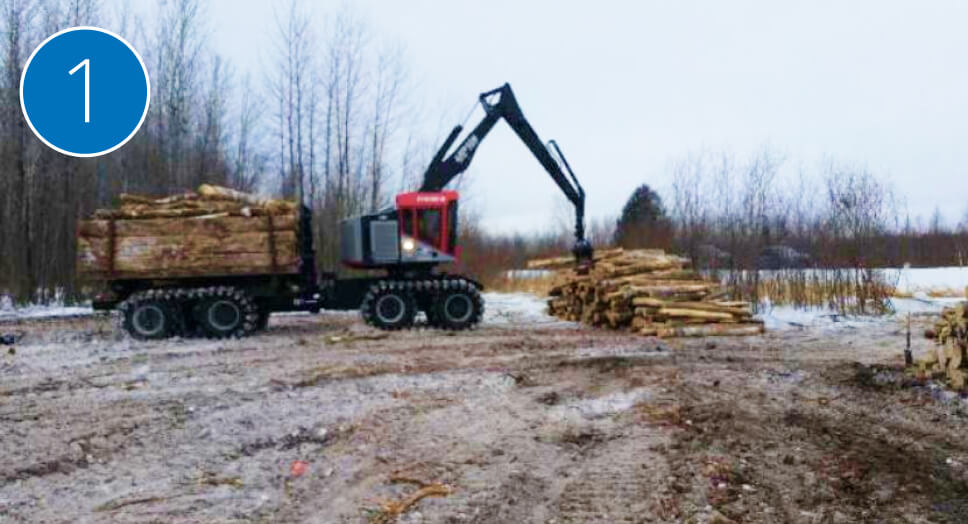
Initial surveying, right-of-way clearing, and access development
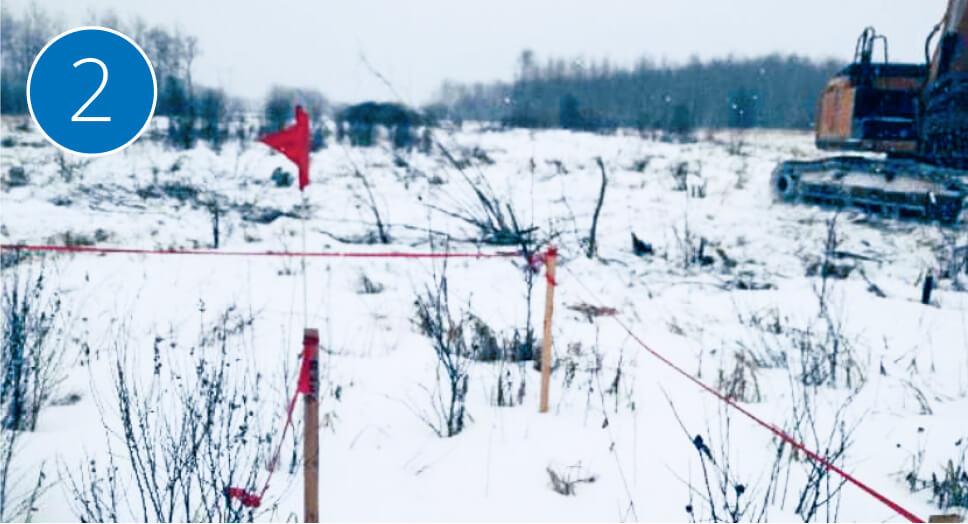
Structure staking, surveying, and soils investigations as needed
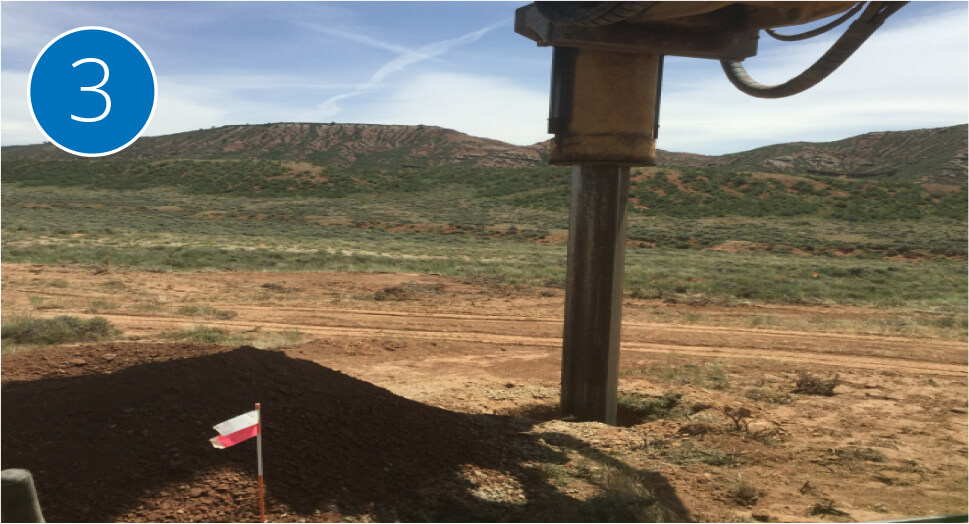
Foundation installation*
*Foundation type may vary depending on structure.
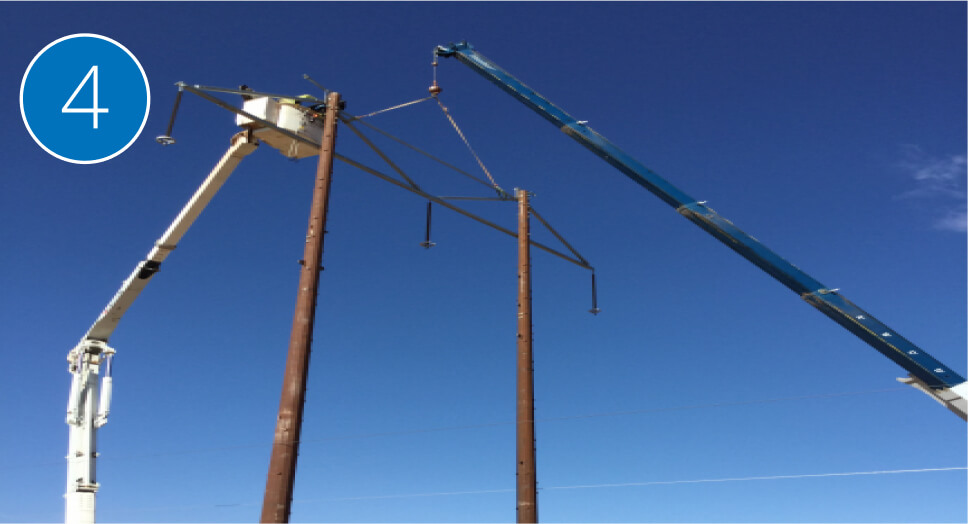
Assemble and set structures
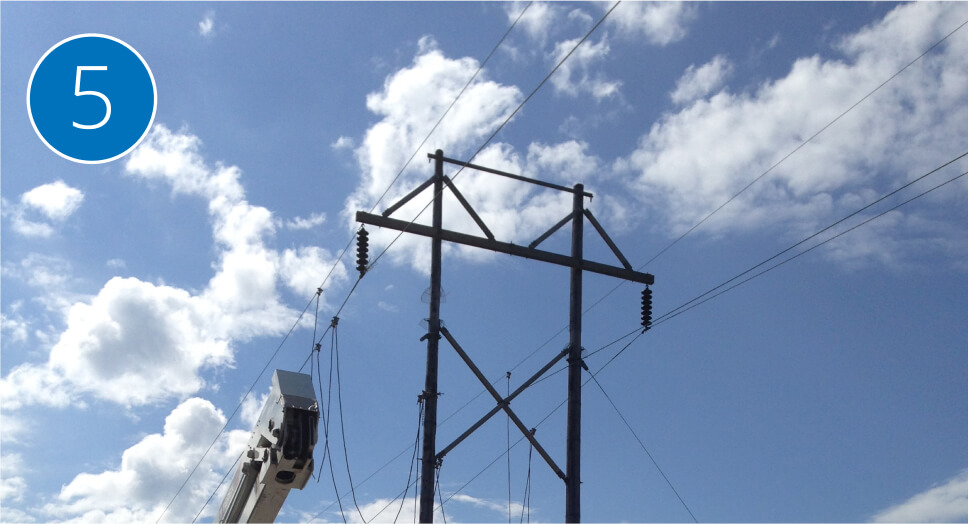
Wire Installation
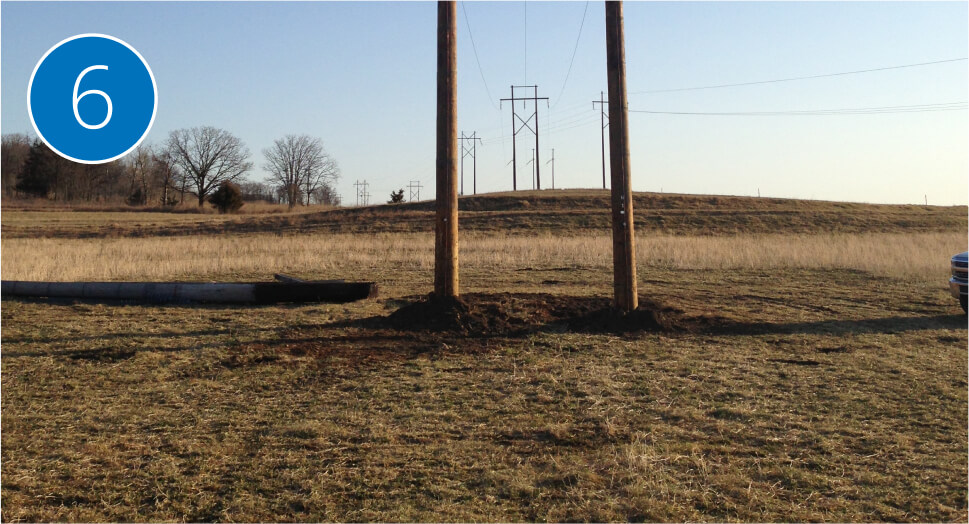
Clean up and restoration
Structures
The structure types and specifications shown below are preliminary and subject to change. Other structure types may be used depending on final route location.

Typical 115kV Structure
Typical Height: 50-80 feet
Typical Span: 500-1,000 feet
Foundation Type: direct embed
Typical Right-of-Way: 100 feet

Typical 230kV Structure
Typical Height: 60-100 feet
Typical Span: 500-1,000 feet
Foundation Type: direct embed
Typical Right-of-Way: 130 feet
The structure figures shown here are wood pole H-Frame tangent type structures which are anticipated to be common on new lines. Less common structure configurations including but not limited to deadends, angles, crossings, transpositions, and double circuits may also be necessary and may consist of wood pole, guyed wood pole, or steel pole type structures not pictured here. Typical structure heights and spans indicate the average expected values for the majority of structures of this type based on similar facilities. Actual heights and spans are a function of structure type, wire type, wire tension, voltage, route, and topography. Actual span lengths and structure heights may vary outside typical values as necessary.
FAQs
What is the Duluth Loop Reliability Project?
This project will enhance reliability in and around Duluth and along the North Shore by building an additional transmission source. The Duluth Loop Reliability Project includes four components:
- Construction of a new approximately 14-mile 115 kilovolt (kV) transmission line between the Ridgeview, Haines Road, and Hilltop substations.
- Construction of a new approximately one-mile extension connecting an existing 230kV transmission line to the Arrowhead substation.
- Upgrades to the Ridgeview, Hilltop, Haines Road, and Arrowhead substations.
- Reconfiguration, rebuild, and upgrade to existing transmission lines and communications infrastructure in the Project area.
By 2027, the new Duluth Loop Reliability Project will be completed and serving our community.
What are the project benefits?
The Duluth Loop Reliability Project will enhance energy reliability for communities in Duluth and the North Shore by adding transmission in the area replace grid strength and stability that was once provided by local coal-fired generation.
Who will benefit from the Duluth Loop Reliability Project?
Many industrial, commercial, and residential customers within our project Study Area and in communities along the North Shore will directly benefit from the enhanced reliability provided by Duluth Loop Reliability Project.
Why is Minnesota Power building a new transmission line?
About 50% of our energy comes from renewable sources and we will continue to invest in affordable, reliable, and increasingly carbon-free sources of energy for the communities we serve.
As part of our clean energy commitment, we’ve reduced our reliance on coal-fired generation. In order to maintain a continuous supply of safe and reliable electricity, we must replace the support those coal plants once supplied to our system. To do this, we’re connecting transmission lines to enhance stability and reliability in our communities.
What is the timeline of the Project?
We started the early data collection for the project in fall 2020 and anticipate a five to seven-year timeline for route develop through construction including:
- 2021-2023: Routing, public engagement, permitting, real estate, and preliminary engineering.
- 2024-2025: Engineering, pre-construction surveys (wildlife, archeological, wetland/stream, and soil surveys), real estate, construction.
- 2025-2027: Construction and complete
What will the structures look like and how tall will they be?
The specific type and size of structures to be used will depend on the routes identified in this process. We anticipate the use of wood pole H-frame structures and steel pole structures similar in appearance to existing transmission lines in the area.
- For a typical 115kV line H-frame, the structures will range 50-80 ft in height, span between 500-1,000 ft apart and require approximately 100 ft of right-of-way.
- For a typical 230kV structure, the typical height ranges from 60-100 feet with a typical span of 500-1,000 feet. The typical right-of-way is 130 feet.
Are you planning to install fiber optics on the line?
Preliminary plans are to install fiber optics on new transmission lines. However, this ultimately depends on the final transmission line configurations and whether existing fiber optic infrastructure can be used to meet communication needs.
When will Minnesota Power start reaching out to affected landowners for next steps?
Property owners with land requiring right-of-way acquisition have been contacted by a real estate representative from Land Service Company, a contractor for Minnesota Power. If you have any questions about right-of-way acquisition, please contact Barb Taves at btaves@landservicecompany.com.
How will right-of-way be maintained after construction?
After initial right-of-way clearing and transmission line construction, additional vegetation management activities may occur. The right-of-way will then need to be cleared once every 6-7 years. Clearing methods will be based upon what is allowed on each individual property.
How does the Minnesota Public Utilities Commission make a decision on the final route?
The Public Utilities Commission’s decision was based on information provided in Minnesota Power’s route permit application, a document prepared by the Department of Commerce, and a report from a judge that included testimony from stakeholders. The PUC reviewed and considered impacts to private properties and natural resources.
Will this project affect wildlife, streams, and recreation areas?
Minnesota Power will do its best to minimize the impacts to wildlife, streams, and recreation areas. The transmission line will need to cross several streams. Minnesota Power may conduct habitat surveys, where necessary. The Minnesota Department of Commerce will perform an environmental review on the entire project.
How close to a residence are you allowed to build a transmission line?
Minnesota Power’s goal is to route the line such that no existing structures will be located within the 100-foot right-of-way, and where practical we will seek to maximum distance to homes to a greater degree. One of the provisions of the easement for the new line is that no new structures can be built in the right-of-way.
Schedule
The planning, development, and construction schedule is subject to change based on weather, the availability of equipment and materials, and other potentially unforeseen events. The project is anticipated to be complete in 2027.

Permitting Documents
Route Permit
- MPUC Order Granting Certificate of Need and Issuing Route Permit
- Duluth Loop Route Permit (including Complaint Handling Procedures)
- Duluth Loop Route Permit Map
- MN DOC Rights-of-Way and Easements Factsheet
To view the Route Permit docket, visit the eDockets website and follow these simple steps:
-
Enter the Docket Number: TL-21-141 into the Docket Number Search Field as shown below.

- Click Search, then on the next screen, click on the documents to view.
To view the Certificate of Need docket, visit the eDockets website and enter the Docket Number: CN-21-140.





